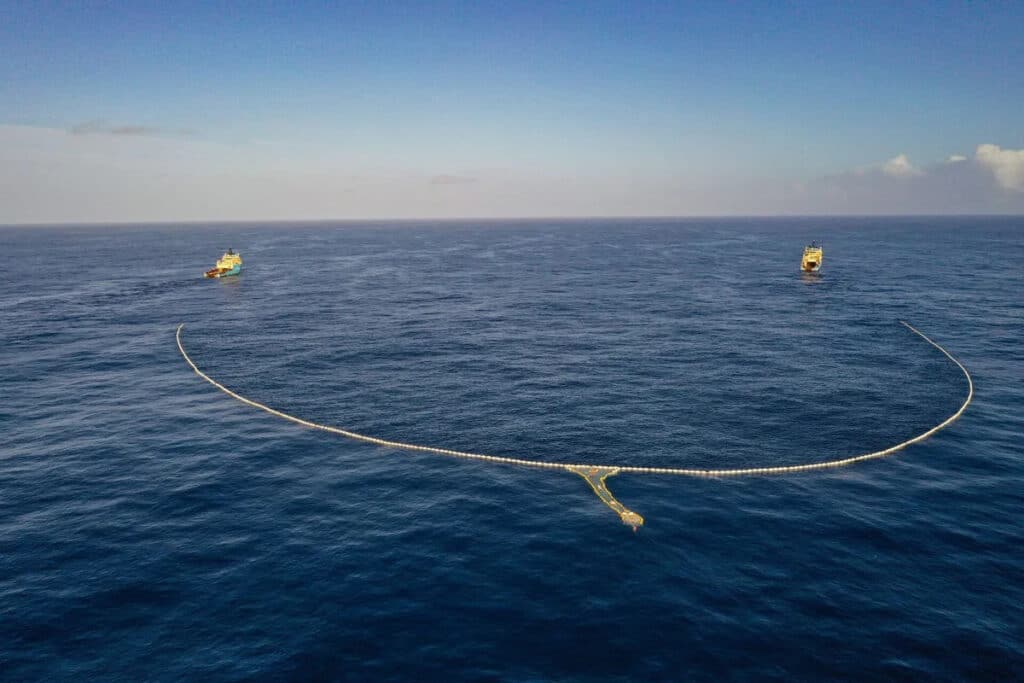The subtropical oceanic gyre in the North Pacific ocean is currently covered with tens of thousands of tonnes of floating plastic debris, dispersed over millions of square kilometers. This accumulation zone is referred to as the Great Pacific Garbage Patch (GPGP) and has become a symbol of the impact of the widespread use of plastics and their discarding in the global ocean.
A new study by the Ocean Cleanup project and Wageningen University has revealed that the majority of the plastic debris in the Great Pacific Garbage Patch originates from fishing activities at sea.
Founded in 2013, the Ocean Cleanup project has since developed technology to extract plastic pollution from the oceans. The plastic is collected by a huge floating U-shaped barrier, which is towed through the water by ships located at either end.
Previous research by the company has shown that almost half of the plastic mass in the GPGP is comprised of fishing nets and ropes, with the remainder largely composed of hard plastic objects and small fragments. While the provenance of fishing nets is obvious, the origins of the other plastics in the GPGP have – until now – remained unclear.

Plastic emissions from rivers remain the main source of plastic pollution from a global ocean perspective. It mostly consists of land-dumped trash such as plastic bottles, bags, or product packaging, which reportedly make up the majority of marine plastic pollution in general.
However, the Ocean Cleanup project has now announced that 75% to 86% of plastic debris in the Great Pacific Garbage Patch (GPGP) originates from offshore fishing activities at sea. For their study, the researcher analyzed over 6000 hard plastic debris items larger than 5 cm (excluding nets and ropes) retrieved from the GPGP in 2019. They found that roughly a third of the items were unidentifiable fragments, while the other two-thirds were dominated by objects typically used in fishing, such as floats, buoys, crates, buckets, baskets, containers, drums, jerry cans, fish boxes, and eel traps.
When the team used computer models to simulate how their samples ended up in the patch, they found that a plastic fragment was 10 times more likely to originate from fishing activities than land-based ones. Thanks to wind patterns and ocean currents, plastic lost at sea has a higher chance of accumulating offshore than plastic emitted from rivers, leading to high concentrations of fishing-related debris in the GPGP. The primary countries/regions of origin identified on the majority of the items were Japan (34%), China (32%), the Korean peninsula (10%), and the USA (7%).
While plastic accumulated in the GPGP itself mostly comes from marine-based activities, it is land-based emissions that contribute to the majority of plastic in the oceans globally. By intercepting plastic in the river, the Ocean Cleanup project wants to stop the plastic from entering the ocean in the first place and largely eliminate plastic pollution in the world’s coastal waters.
However, this research confirms that cleaning up the GPGP and keeping it clean will require more. Researchers hope that their new study will enable organizations and the fishing industry itself to address this other source of plastic pollution to the GPGP.
The Great Pacific Garbage Patch is mostly fishing gear
Source: Tambay News

0 Comments